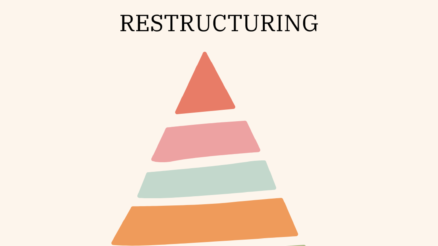Change management and configuration management are two essential practices that play a vital role in the success of organizations.
In today’s fast-paced and ever-evolving business landscape, companies must adapt to new technologies, processes, and market demands to stay competitive.
However, managing these changes effectively while maintaining the stability and reliability of their systems and infrastructure can be challenging.
This is where change management and configuration management come into play.
We will explore the key differences between change management and configuration management, understanding their unique roles and benefits.
So, let’s dive in to understand what is difference between change management and configuration management and how these two practices work together.
What is change management and its purpose?
Change management refers to the structured approach and set of processes used to transition individuals, teams, and organizations from a current state to a desired future state.
It involves planning, executing, and monitoring changes within an organization to minimize disruption and maximize positive outcomes.
The purpose of change management is to ensure that changes are implemented smoothly, effectively, and with minimal resistance.
By employing a systematic approach, change management aims to address the human side of change, considering the impact on employees, stakeholders, and the organization as a whole.
It helps create a supportive environment that promotes acceptance, adoption, and utilization of the change, leading to successful outcomes, increased productivity, and improved organizational performance.
Process and Steps involved in change management
The process of change management typically involves several key steps to ensure a structured and effective transition.
While specific methodologies may vary depending on the organization and context, the following are common steps involved in change management:
- Change Identification and Request: This step involves identifying the need for change, whether it arises from internal factors such as process improvements or external factors like market shifts. Requests for change can come from various sources, including employees, stakeholders, or management.
- Impact Assessment and Analysis: Once a change is identified, it is crucial to assess its potential impact on different aspects of the organization, such as people, processes, technology, and resources. This step helps determine the scope of the change and the potential risks and benefits associated with it.
- Change Planning and Approval: In this step, a detailed plan is developed to manage the change effectively. It includes defining objectives, outlining the change implementation strategy, allocating resources, and establishing a timeline. The change plan is then presented for approval by relevant stakeholders or a change management board.
- Change Implementation and Testing: The change plan is put into action during this phase. It involves executing the necessary activities to implement the change, such as process modifications, system upgrades, or training programs. Testing and pilot programs may be conducted to ensure the effectiveness and compatibility of the change with existing systems and processes.
- Change Review and Evaluation: Once the change is implemented, it is essential to evaluate its effectiveness and gather feedback from stakeholders. This step involves monitoring and measuring the outcomes of the change, comparing them against predefined success criteria, and identifying any areas that require further improvements or adjustments.
- Change Communication and Stakeholder Engagement: Throughout the change management process, effective communication is critical to engage and involve stakeholders. Clear and timely communication helps manage expectations, address concerns, and gain support for the change. Regular updates, feedback mechanisms, and training programs can be employed to ensure stakeholders understand the change and its impact.
- Change Documentation and Knowledge Management: Documenting the change management process, including the decisions made, actions taken, and lessons learned, is crucial for future reference and continuous improvement. This documentation can serve as a valuable resource for managing future changes and sharing knowledge within the organization. For more reading, do check out: Interplay between knowledge management and change management.
what is configuration management and its purpose?
Configuration management refers to the discipline of managing and controlling the configuration of items within an organization’s systems, infrastructure, and software applications.
It involves systematically identifying, organizing, and tracking all components, dependencies, and changes associated with these items throughout their lifecycle.
The purpose of configuration management is to ensure that the organization’s systems and assets are accurately documented, controlled, and maintained in a consistent and reliable state.
Process and steps involved in configuration management
The process of configuration management typically involves several key steps to ensure effective control and management of an organization’s configuration items. While specific methodologies may vary, the following are common steps involved in configuration management:
- Configuration Planning: This step involves defining the scope and objectives of the configuration management process. It includes identifying the configuration items to be managed, establishing configuration baselines, and determining the roles and responsibilities of individuals involved in the process.
- Configuration Identification: In this step, all configuration items within the organization’s systems are identified and documented. Each item is assigned a unique identifier and associated attributes, such as version numbers, dependencies, and relationships with other items. This step establishes a comprehensive inventory of configuration items.
- Configuration Control: Configuration control focuses on managing changes to the configuration items. It involves establishing change control processes and procedures to evaluate and approve proposed changes. Change requests are assessed for their impact on the configuration items, and appropriate approvals are obtained before implementing the changes.
- Configuration Status Accounting: Configuration status accounting involves capturing and maintaining accurate records of the configuration items and their versions or states. It includes tracking changes made to the items, documenting the history of modifications, and updating the configuration management database or repository accordingly. This step ensures that the current configuration status is known and can be easily accessed and verified.
- Configuration Verification and Audit: Regular verification and audit activities are performed to validate the accuracy and integrity of the configuration items. This involves comparing the documented configuration against the actual state of the items to identify any discrepancies. Audits help ensure that the configuration management processes and procedures are followed correctly and that the configuration items are in compliance with established standards.
- Configuration Reporting and Documentation: Configuration reporting involves generating reports and documentation that provide insights into the configuration status, changes, and compliance. These reports may include configuration baselines, change logs, audit findings, and performance metrics. The documentation serves as a reference for future configuration management activities and provides a historical record of the system’s configuration.
- Configuration Release and Deployment: This step focuses on the controlled release and deployment of configuration items. It includes procedures for packaging, testing, and distributing changes to ensure proper installation and integration into the operational environment. This step ensures that changes are implemented consistently and in a manner that minimizes disruption and risk.
Relation Between Change Management and Configuration Management
Change management and configuration management are closely intertwined. Configuration management provides the foundation and control mechanisms necessary for effective change management. It ensures that changes are implemented in a controlled manner, maintaining the integrity and reliability of the system. The relationship between these two practices ensures that changes are well-planned, documented, and implemented, ultimately contributing to successful outcomes for the organization.
Change management and configuration management are closely related and interdependent practices within an organization. They work together to ensure smooth transitions, maintain system integrity, and drive successful outcomes.
Here are some key points highlighting the relationship between change management and configuration management:
- Change Impact on Configuration: Change management processes and activities often lead to modifications in the configuration of an organization’s systems, infrastructure, or software applications. These changes may involve adding, modifying, or removing configuration items. Configuration management provides the necessary control and tracking mechanisms to manage these changes effectively.
- Configuration Baseline for Change Management: Configuration management establishes and maintains a configuration baseline, which serves as a reference point for change management. The baseline provides a clear snapshot of the current state of the system, including all relevant configuration items and their relationships. It helps change management teams understand the existing configuration, plan for changes, and assess the impact of proposed changes.
- Change Control and Configuration Management: Change control processes, which are an integral part of change management, rely on configuration management to track and control changes effectively. Configuration management provides the necessary infrastructure, such as configuration management databases (CMDBs), to manage change requests, evaluate impacts, obtain approvals, and implement changes while maintaining the integrity of the configuration items.
- Configuration Management Supports Change Evaluation: During the change evaluation phase, configuration management plays a crucial role in verifying and validating the changes made. It helps ensure that the implemented changes are accurately reflected in the configuration records and that the system remains in a known and reliable state.
- Configuration Management Enables System Recovery: In the event of a failed change or system disruption, configuration management becomes instrumental in restoring the system to a previous known and stable configuration state. It provides the necessary information to identify the last known good configuration, facilitating system recovery and minimizing the impact of failures or disruptions.
- Documentation and Reporting Alignment: Both change management and configuration management rely on accurate documentation and reporting. Configuration management captures and maintains configuration information, while change management documents the changes made and their associated impacts. The information from configuration management feeds into change management processes, ensuring that accurate and up-to-date configuration data is available for decision-making and reporting.
six differences between Change Management and Configuration Management
Change management and configuration management differ in their definition, focus, timing, relationship, tools used, and impact on stakeholders and organizational outcomes.
While change management addresses the human side of change and facilitates smooth transitions, configuration management focuses on controlling and maintaining the accuracy of configuration items within the organization’s systems and infrastructure.
Both practices are crucial for managing change effectively and ensuring the stability and reliability of organizational assets.
01. Definition and Scope
Change management is the structured approach and set of processes used to transition individuals, teams, and organizations from a current state to a desired future state. It encompasses the management of changes to processes, systems, technologies, and organizational structures. On the other hand, configuration management is the discipline of managing and controlling the configuration of items within an organization’s systems, infrastructure, and software applications. It primarily focuses on the identification, tracking, and control of configuration items and their relationships.
02. Focus and Primary Objectives
The primary focus of change management is to address the human side of change and ensure smooth transitions while minimizing resistance. Its primary objectives include managing stakeholder expectations, facilitating adoption and acceptance of change, and mitigating the negative impact of change on individuals and the organization. In contrast, the primary focus of configuration management is to establish and maintain control over the organization’s configuration items. Its objectives include accurate documentation, version control, and the ability to reproduce and restore the system to a known and reliable state.
03. Timing and Frequency of Activities
Change management activities typically occur during periods of significant organizational change, such as process reengineering, system implementations, or mergers and acquisitions. Change management activities are relatively infrequent and occur when major changes are introduced. On the other hand, configuration management activities are ongoing and continuous throughout the life cycle of the organization’s systems and assets. Configuration management activities, such as configuration identification, control, and verification, are performed regularly to ensure the accuracy and integrity of the configuration items.
04. Relationship and Interdependency
Change management and configuration management have a close relationship and interdependency. Changes managed through the change management process often impact the configuration items and their documentation. Configuration management provides the necessary control and tracking mechanisms for changes introduced through the change management process. Configuration management ensures that the accurate and up-to-date configuration information is available to support change planning, implementation, and evaluation.
05. Tools and Technologies Used
Change management typically involves the use of various tools and technologies for managing and documenting changes, such as change management software, project management tools, and collaboration platforms. These tools facilitate communication, workflow management, and tracking of change requests and approvals. Configuration management, on the other hand, relies on configuration management tools and software that support the identification, tracking, and control of configuration items, such as configuration management databases (CMDBs) and version control systems.
06. Impact on Stakeholders and Organizational Outcomes
Change management directly impacts stakeholders, as it involves managing the human aspect of change. It aims to minimize resistance, address concerns, and ensure stakeholder engagement and support. Effective change management can lead to improved employee morale, increased productivity, and successful adoption of change initiatives. Configuration management, on the other hand, primarily impacts the operational aspects of the organization. It ensures the stability, reliability, and consistency of systems and assets, reducing downtime, improving operational efficiency, and enabling effective troubleshooting and maintenance activities.
Importance of Change Management and Configuration Management in organizational success
Change management and configuration management are integral to organizational success. While change management ensures smooth transitions, acceptance, and productivity during periods of change, configuration management establishes control, reliability, and stability within the organization’s systems.
Combining these practices enables organizations to adapt to evolving environments, effectively manage changes, maintain operational excellence, and drive long-term success.
Here’s a closer look at the importance of these two practices:
Change Management
Change is inevitable in any organization, whether it’s driven by technological advancements, market shifts, process improvements, or organizational restructuring. Effective change management is crucial because it:
- Minimizes resistance: Change often faces resistance from employees due to fear, uncertainty, or concerns about the impact on their roles or the organization. Change management helps address these concerns, increases stakeholder engagement, and minimizes resistance, leading to smoother transitions.
- Facilitates adoption and acceptance: Change management focuses on ensuring that individuals and teams embrace and adopt the change. By providing clear communication, training, and support, change management helps employees understand the benefits of the change and encourages them to embrace new ways of working.
- Enhances productivity and performance: Well-managed change initiatives help employees adapt to new processes, systems, or structures efficiently. This leads to increased productivity, improved performance, and enhanced competitiveness for the organization.
- Mitigates risks and reduces errors: Change management incorporates risk assessment and mitigation strategies. By identifying potential risks and implementing appropriate controls, organizations can minimize errors, system failures, and other negative impacts associated with change.
- Fosters a culture of continuous improvement: Change management promotes a culture that values innovation, learning, and adaptability. By consistently managing and adapting to change, organizations can foster a culture of continuous improvement and stay ahead in dynamic business environments.
Configuration Management
Configuration management is critical for maintaining the stability, reliability, and consistency of an organization’s systems, infrastructure, and assets. Its importance lies in the following aspects:
- Ensures accuracy and control: Configuration management provides accurate documentation and control over configuration items, including hardware, software, and their dependencies. This ensures that the organization has a comprehensive understanding of its systems and can maintain control over the configurations.
- Supports effective change management: Configuration management provides a reliable baseline and tracking mechanism for changes. It ensures that changes are implemented in a controlled manner, minimizing disruptions and maintaining the integrity of the systems.
- Enables efficient troubleshooting and maintenance: With accurate configuration information readily available, configuration management allows for faster identification and resolution of issues. It enables efficient troubleshooting, reduces downtime, and supports effective maintenance activities.
- Enhances compliance and security: Configuration management helps organizations maintain compliance with regulatory requirements and industry standards. It ensures that the organization has proper controls and safeguards in place to protect its systems and assets.
- Enables scalability and flexibility: By maintaining accurate configuration information, organizations can scale their systems, deploy new technologies, and adapt to changing business needs more effectively. Configuration management supports efficient planning and implementation of changes required for growth and flexibility.
Final Words
Both change management and configuration management are crucial practices that organizations must embrace to achieve success in today’s dynamic and fast-paced business landscape. For organizational success is important to know what is difference between change management and configuration management. By integrating these practices, organizations can effectively manage change, maintain stability, drive productivity, and foster a culture of continuous improvement, ultimately positioning themselves for sustained success and growth in an ever-evolving business environment.



